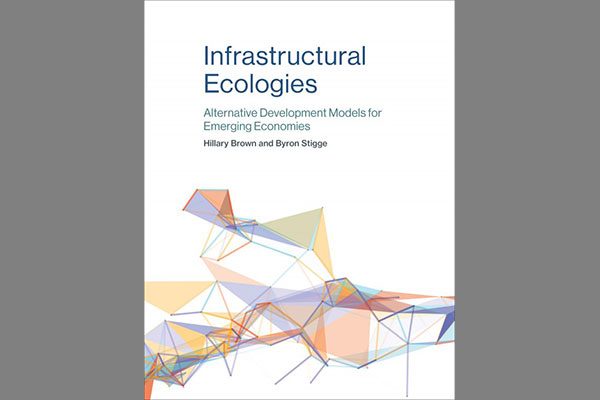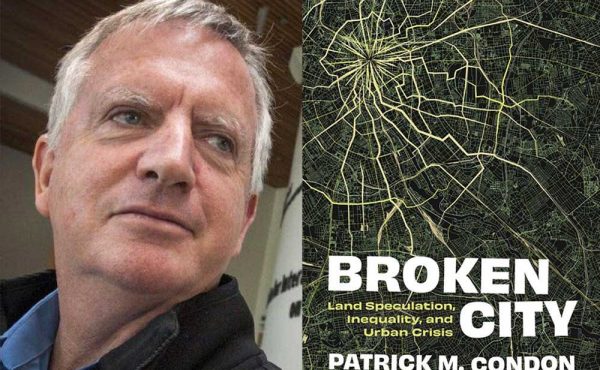
Authors: Hillary Brown and Byron Stigge (The MIT Press, 2017)
***
The United Nations Sustainable Development Goals (2015), along with the ongoing United Nations Climate Change Conferences have continually made the case for gearing climate-friendly, low-carbon solutions to delivering infrastructure in developing countries. Infrastructural Ecologies: Alternative Development Models for Emerging Economies is written within the framework of these high level goals, presented alongside other large-scale metrics including of the GDP of emerging economies, and infrastructure price tags. The book illustrates how infrastructure development can catalyze improved health care, access to water, and income generation in developing countries.
Authors Hillary Brown (AIA, Principal of New Civic Works) and Byron Stigge (Director, LEVEL Infrastructure), present more than 50 successful, real world case studies of infrastructure projects that have been implemented or are currently underway in countries such as Sri lanka, Brazil, India, Chile, Vietnam, Indonesia, Nigeria, Kenya, and Columbia. The projects are split into five chapters, each representing a type of “infrastructural ecology”: which the authors define as “exchanges across multiple sectors, enabling output from one sector to be used as input by another. The resulting “closed-loop” systems yield infrastructure that is more resilient and sustainable while offering higher economic, social, and environmental returns.”
The case studies are densely packed with stakeholder acronyms and financial metrics. Since each operates under the concept of an ecosystem, contain a multitude of related inputs and outputs. Flow charts illustrated many of these complex systems, further complemented by an appendix reference matrix of outcomes and strategies.****The case studies are grouped into five thematic groupings: water management, post-carbon energy models, community participation, climate-adaptive infrastructure, and co-located/symbiotic systems. While the continual shifting from country to country within each of the groupings is sometimes difficult to follow, Intrastructural Ecologies manages to land high-level concepts using real life examples and comprehensible figures. Across the globe, cross-sector collaboration combined with traditional knowledge, and highly innovative technologies, are making progress economically and environmentally viable. The case studies provide an extremely hopeful and forward-looking synopsis.
The book also provides advice geared toward public sector employees on how to implement infrastructural ecologies as an alternative to traditional single-system development, including insight on coupling funding opportunities to yield the highest impact results.
Infrastructural Ecologies expertly balances theories and applications that policy makers, designers, and infrastructure developers will find accessible and applicable to both developed and developing countries. The case studies model “solving for pattern” in light of climate change and low access environs, pushing the boundaries of what infrastructure can truly be.
**
If you want more information on Infrastructural Ecologies, visit The MIT Press website.
*
Shelley Long is a landscape designer interested in cross-disciplinary collaboration in environmental design, Canadiana, and placemaking through spacemaking.




